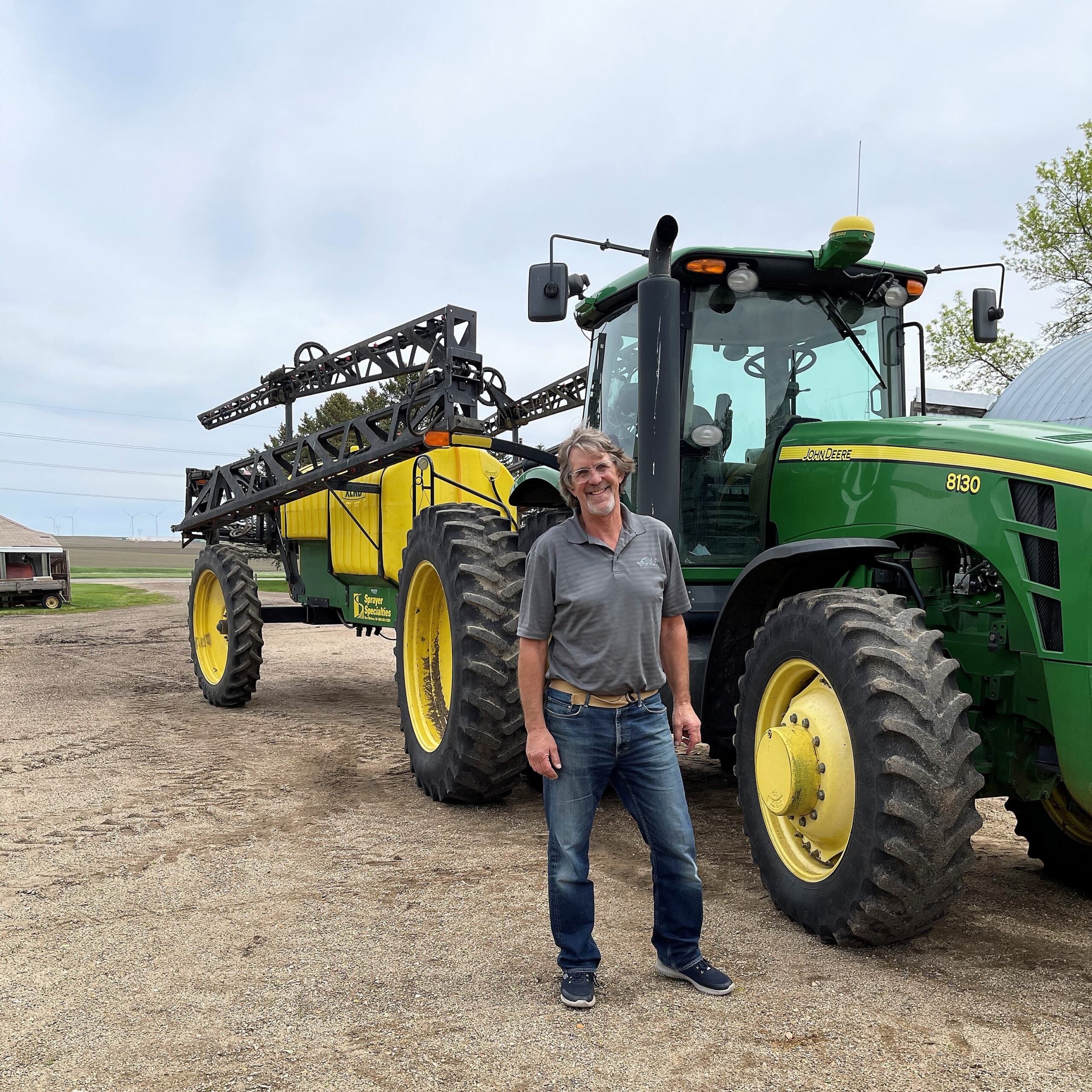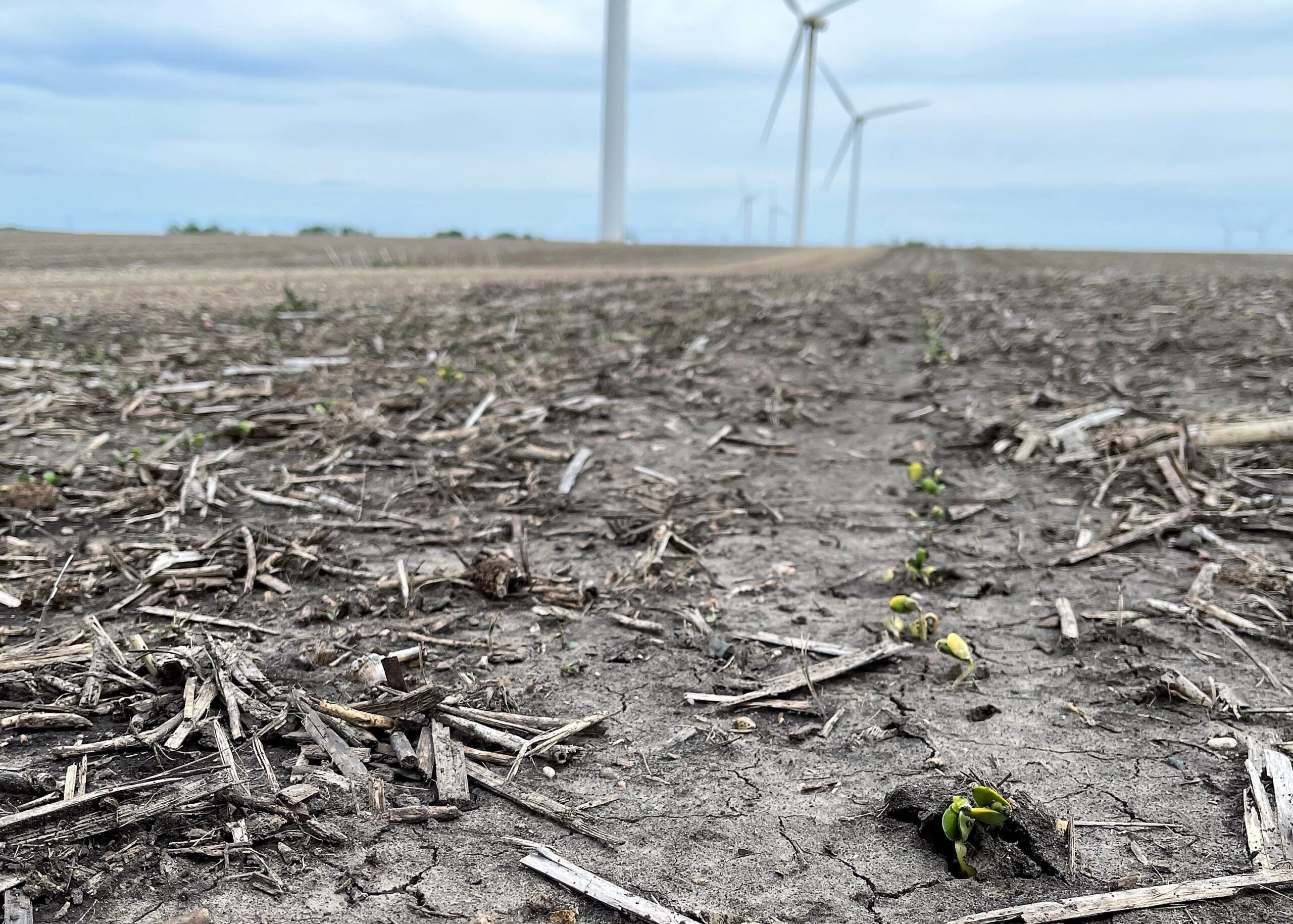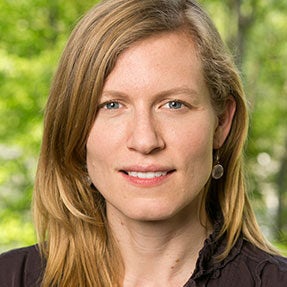- Resources
- Farmers see value in agriculture loans that reward stewardship
Resources
Farmers see value in agriculture loans that reward stewardship
Published: October 14, 2022 by Maggie Monast
In January 2022, global farmer-to-farmer network and ag tech company Farmers Business Network®, launched a new rebate program for farm operating loans. The Regenerative Agriculture Finance Operating Line program includes a 0.5% interest rate rebate for farmers who achieve climate and water quality benchmarks established by Environmental Defense Fund. Both farmers who already meet the benchmarks, as well as farmers who improve practices to do so, are eligible.
The $25-million pilot fund filled up quickly, with 48 farmers enrolled and a growing waitlist to participate in an expanded fund. With the initial pilot underway, FBN plans to scale the fund to $500 million over the next three years and access public markets to securitize and sell these loans to investors seeking liquid, environmentally friendly investments.
Over the first year of the program, we are sharing what we are learning with others in the agriculture sector. EDF had the chance to sit down with two participating farmers about their experiences — Joel Uthe, operator of Uthe Farm in Chariton, Iowa, and David Iverson, operator of Iverson Farm in Astoria, South Dakota.
How did you hear about the Regenerative Agriculture Finance Operating Line program, and what made you want to participate?
Joel: I heard about the program through my lender and banker at FBN. They approached me because they knew how I handled my operation and felt that I should take advantage of this program. I really like to geek out on my numbers and cut costs per acre. Wherever a farmer can save money for doing good work on the land, you know that is a good deal.
David: I have a good working relationship with my lender through FBN, and they were able to identify the types of practices I was doing on my land and the opportunity to enroll in the program. It seemed like a positive program. Curiosity got the best of me, and I decided to pursue this opportunity.
Which of your conservation farming practices make you eligible for the rebate?
Joel: I was already implementing minimum tillage on all my acres, and that qualified for the rebate. However, we took a big step this year and implemented a split-nitrogen program and cut the [application] rate a lot.
David: I have been farming alongside my father for over 40 years, and he is still operating the combine at 91 years old. Ridge till, as it was called back then, is like no till and it’s a conservation practice my father has been using since the 1980’s. They both have taught me the important of conservation. We have been using no-till on most of our 1,500 acres of corn and soybean for decades, but more recently I have been focusing on variable-rate applications of my fertilizer. When the corn is growing, I use side dressing to put on liquid nitrogen and focus on using it only when the crop needs it.
What kinds of costs and savings do you associate with these conservation practices?
Joel: We do soil-holding capacity tests to make sure we are not over applying nitrogen. We do direct spray applications and follow the 4R Nutrient Stewardship — right source, right rate, right time and right place. We save money on costs, but the biggest factor here is the increase in our yields and not wasting more nutrients.
David: There is a time savings component when I plant using no-till on the field. Luckily, planting season has been pretty good the past two years for no-till, because if it gets too wet in the spring, it is hard to get out on the field. Because I only have to focus on planting and do not have to do any prior tillage work, I save fuel and the expense of time with running the operation.
Do you consider the 0.5% interest rate significant from a financial perspective?
Joel: I believe that this rate reduction is a good start. The incentive was good for me, but I think that maybe there should be different percentage rates for different practices. Farming is always evolving and having a range of percentages for farmers who might be on the fence about enrolling might make it more attractive.
David: This was enough incentive to draw interest for myself, especially when I was already doing practices that met the requirements. My favorite thing about this program was that the application process was easy, and the reward benefit was a nice amount.
Is there anything else you’d like to share about your experience so far?
Joel: I want to emphasize that regenerative agricultural practices have been great for our land. I look forward to exploring different practices like cover crops and improving nitrogen efficiency. There’s nothing wrong with saving money and helping our footprint for mother nature: She gives us so much and it feels good to give back to her.
David: For those who are just getting started with implementing new conservation practices my advice would be to start slow and talk to people who have been doing it. This spring, a neighbor called me letting me know that they were going to try no-till for the first time. I told them to go for it and to maybe just try it on one field. This (the Regenerative Agriculture Finance Operating Line) is a great program that I would like to see expanded and available to more people.
To learn more about the Regenerative Agriculture Finance Operating Line program and how to participate contact FBN.
Our Experts




